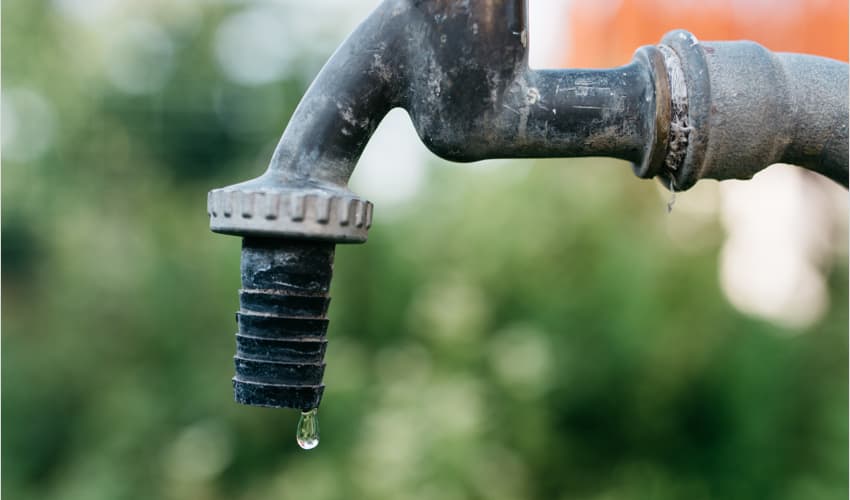Familiarize Yourself With Half a Dozen Principal Factors For Water Leakage Within Your Home
Familiarize Yourself With Half a Dozen Principal Factors For Water Leakage Within Your Home
Blog Article
Are you in search of information about How to detect water leaks in your home?

Leakages not only cause waste of water but can additionally create unnecessary damage to your residence and promote unwanted organic development. However, water leaks may go undetected considering that a lot of the pipework in our home is hidden. By looking and also understanding for everyday circumstances that cause leakages, you can protect your home from future leaks and unneeded damage. Today, we will look at 6 leakage creates that may be triggering your pipelines to trickle.
Elbowing in roots
The majority of water leakages start outside the house rather than inside it. If you see an abrupt decrease in water stress, state in your tap, take some time to go out and analyze your backyard. You could see damp patches or sinkholes in your backyard, which may suggest that tree origins are getting into water lines creating water to seep out. You can have your plumber check for invasion, specifically if you have trees or bushes near your property.
Corroded water supply
As time goes by, your plumbing system ages and deterioration such as rust might start gnawing the pipes. This might be the root cause of discoloration or warping on your water pipes. This calls for an examination with your plumber instantly. Consider replacing the pipes because they are at a greater risk of deterioration than the newer models if our plumbing system is old.
Malfunctioning Pipe Joints
The factor at which your pipes attach is often the weakest web link in the waterline. Pipeline joints can deteriorate in time, resulting in water leakages. The majority of pipeline joints are not easily noticeable. If you have loud pipelines that make ticking or banging noises, specifically when the warm water is turned on, your pipe joints are most likely under a great deal of stress. It is a good idea to have your plumber evaluate your system yearly.
Immediate temperature changes.
Extreme temperature level modifications in our pipelines can cause them to expand and also contract unexpectedly. This expansion as well as tightening might cause cracks in the pipelines, especially if the temperature are below freezing. It would be best if you watched on just how your plumbing functions. The visibility of the formerly mentioned conditions regularly shows a high risk.
Poor Water Connectors
At times, a leakage can be triggered by loosened tubes as well as pipes that supply your home appliances. In instance of a water links leakage, you might observe water running straight from the supply line or puddles around your appliances.
Clogged Drains
Clogged drains could be irritating and inconveniencing, however they can in some cases end up creating an overflow bring about burst pipes. Keep eliminating any kind of products that may go down your drains that could clog them to avoid such inconveniences.
All the above are reasons for leakages but not all water leaks arise from plumbing leaks; some leakages may come from roofing system leakages. All leakages must be fixed instantly to avoid water damage.
Leakages not just create waste of water yet can also trigger unneeded damages to your home as well as advertise undesirable organic development. By recognizing and also looking for day-to-day circumstances that create leaks, you can protect your house from future leakages and unneeded damage. Today, we will look at 6 leak causes that might be creating your pipelines to leak.
At times, a leakage can be created by loose pipes and pipes that provide your devices. In case of a water connections leak, you might see water running directly from the supply line or pools around your devices.
How To Check For Water Leak In Your Home
How To Check for Leaks
The average household's leaks can account for nearly 10,000 gallons of water wasted every year and ten percent of homes have leaks that waste 90 gallons or more per day. Common types of leaks found in the home are worn toilet flappers, dripping faucets, and other leaking valves. These types of leaks are often easy to fix, requiring only a few tools and hardware that can pay for themselves in water savings. Fixing easily corrected household water leaks can save homeowners about 10 percent on their water bills.
To check for leaks in your home, you first need to determine whether you're wasting water and then identify the source of the leak. Here are some tips for finding leaks:
Take a look at your water usage during a colder month, such as January or February. If a family of four exceeds 12,000 gallons per month, there are serious leaks.
Check your water meter before and after a two-hour period when no water is being used. If the meter changes at all, you probably have a leak.
Identify toilet leaks by placing a drop of food coloring in the toilet tank. If any color shows up in the bowl after 10 minutes, you have a leak. (Be sure to flush immediately after the experiment to avoid staining the tank.)
Examine faucet gaskets and pipe fittings for any water on the outside of the pipe to check for surface leaks.
Undetected water leaks can happen without the home or business owner even realizing. If you suspect a water leak, but not able to find the source. It is time to contact a professional water leak detection service, The Leak Doctor.
How To Find a Water Leak In Your Home
https://www.leakdoctor.com/blog/How-To-Check-For-Water-Leak-In-Your-Home_AE197.html

As a devoted person who reads about Top Causes of Home Water Leaks, I thought sharing that piece was smart. Sharing is good. One never knows, you may just be doing someone a favor. Thank you for your time. Please check up our website back soon.
Expertise? One call away. Report this page